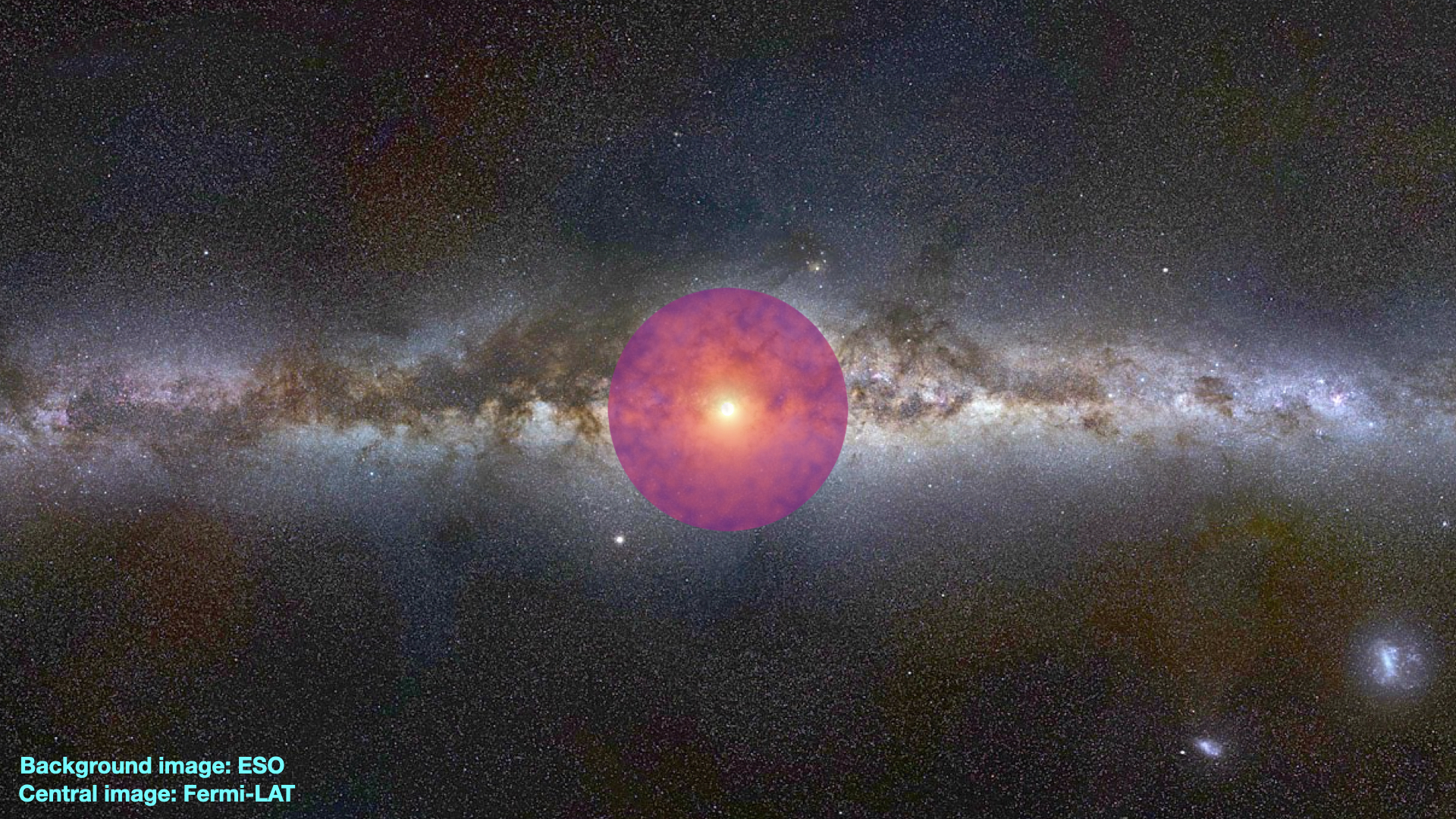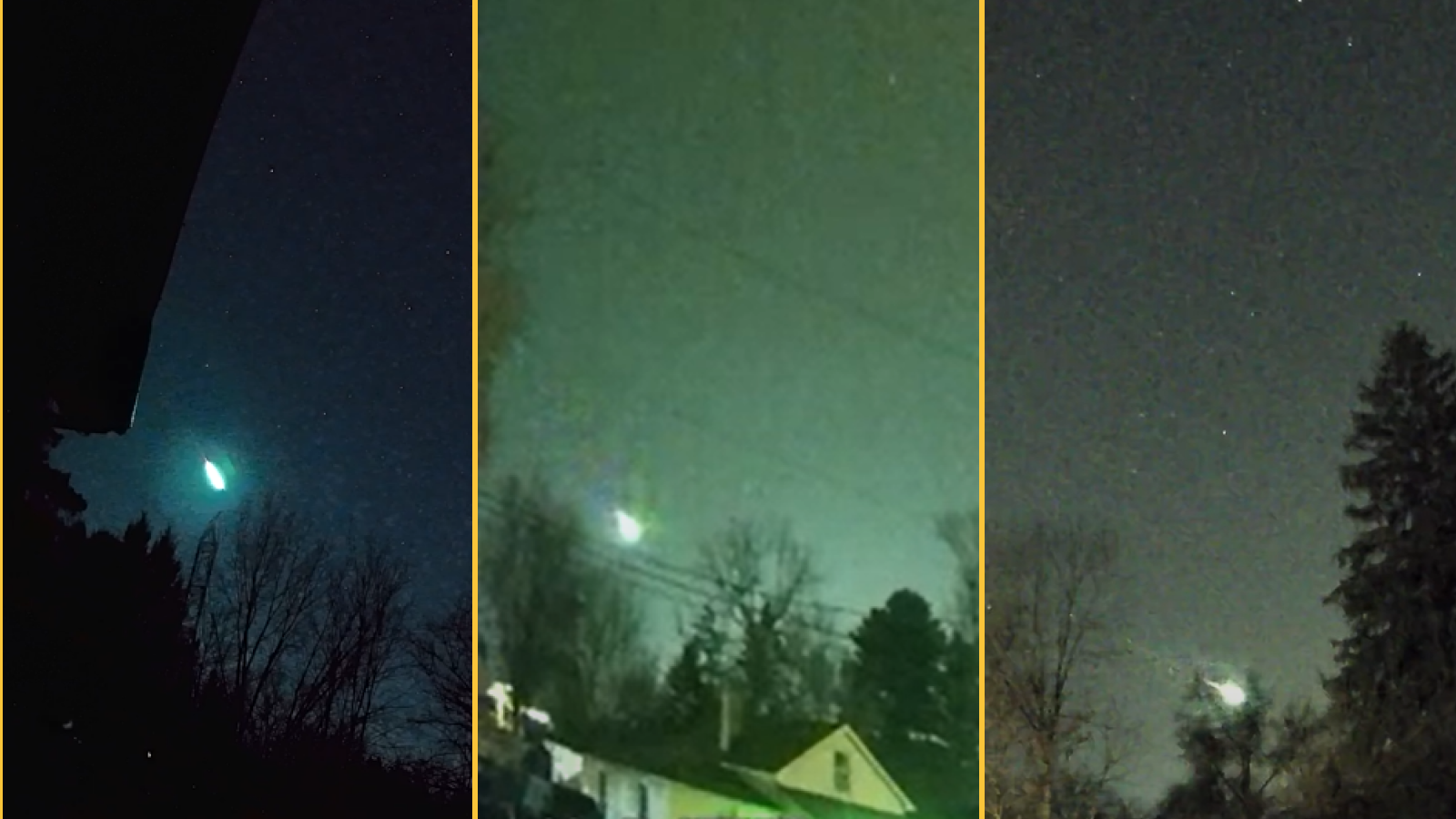Did a NASA telescope really 'see' dark matter? Strange emissions spark bold claims, but scientists urge caution
A new study says observations from the NASA Fermi space telescope suggest a halo of dark matter around the center of our galaxy, but more information is needed to confirm the result.

A new study suggests that a NASA telescope may have made the first-ever observation of elusive dark matter, the invisible and mysterious substance that makes up most of the matter in the universe. However, scientists, including the study author, caution that more research is needed to understand the finding.
NASA's Fermi Gamma-ray Space Telescope, which studies high-energy wavelengths of light known as gamma-rays, spotted emissions in the center of the Milky Way that may be associated with particles linked with dark matter, according to the study, published Tuesday (Nov. 25) in the Journal of Cosmology and Astroparticle Physics.
"If this is correct, to the extent of my knowledge, it would mark the first time humanity has 'seen' dark matter," Tomonori Totani, an astronomy professor at the University of Tokyo and the sole author of the study, said in a statement.
But the study cautions that independent confirmation of this signal must be obtained — not only from the Milky Way but also "from other objects or regions" with similar properties. Similarly, theoretical physicist Sean Tulin, an assistant professor of physics and astronomy at York University in Toronto, told Live Science he would like an independent analysis of the work because it's not the first time such claims have been made using the Fermi telescope.
A prominent example is the "galactic center excess," a source of unexplained gamma-ray light discovered with Fermi data in 2009. After nearly two decades of further research, scientists continue to debate whether the excess is the result of dark matter or more conventional astronomical sources, such as fast-spinning stars known as pulsars.
WIMPs in the cosmos
Dark matter is a nonluminous substance believed to make up most of the matter in the universe. So far, it has been traced only through its gravitational effects on other objects. For example, in a seminal 1933 paper, astronomer Fritz Zwicky stated that faraway galaxies were moving around each other faster than predicted based on the visible matter that could be seen with telescopes. The gravitational pull of dark matter was pegged as the likely reason.
There have been several theories about what dark matter includes, but most astronomers today suggest it is made of subatomic particles. Totani's study centers on a popular particle suggestion, the weakly interacting massive particle (WIMP).
Get the world’s most fascinating discoveries delivered straight to your inbox.
WIMPs fall outside the widely used Standard Model of particle physics, which successfully shows (for the most part) how the building blocks of matter interact with each other. But the model does not account for the force of gravity or the existence of dark matter, according to CERN.
WIMPs are heavier than protons, according to the statement, and WIMPs hardly interact with other types of matter. But when two WIMPs crash into each other, these particles would be destroyed and energetically unleash other particles during the collision, including photons of gamma-rays.
Dark matter, or no?
To search for the gamma-rays associated with WIMP collisions, many studies have focused on clusters of dark matter, such as the center of our Milky Way galaxy. Data obtained from 15 years of observations with the Fermi telescope showed gamma-rays "in a halo-like structure toward the center of the Milky Way galaxy" that "matches the shape expected from the dark matter halo."
These gamma-rays were extremely energetic, with a photon energy of 20 gigaelectron volts (20 billion electron volts). According to the statement, this energy "matches the emission predicted from the annihilation of hypothetical WIMPs," as well as the frequency of WIMP annihilation.

However, Tulin pointed out that the signal shows up only when you remove the background of "all sources of energetic photons coming from the Milky Way," including from its center and its disk. Some background energy is also present from "Fermi bubbles" — two huge zones of gas and cosmic rays that loom over the Milky Way.
All studies looking at energy sources from the Milky Way need to model that background noise and then subtract that to "reveal the underlying signal," Tulin said. "What you infer for the signal depends very carefully on what you subtracted off of the background. … There's a risk of being tricked if you subtract something off incorrectly."
Aside from questions about the background, the signal could depend on the type of dark matter particle being discussed, Tulin said. "What that means is, what is the model for that dark matter particle?" he said. "What is its mass? What are its fundamental properties? What are its different interactions?"
However, the model of annihilation for a standard WIMP is "perfectly reasonable" with the signal Totani observed, Tulin said, with the assumptions that the study is observing WIMPs under the model we understand and the background is subtracted correctly.
Tulin (who had access to a study preprint when speaking with Live Science) added that despite his cautions, the findings "would be a remarkable thing if it was due to dark matter … not just for the future of the astronomical observations, but this type of dark matter particle could be tested and discovered in all sorts of different experiments, like underground labs and in colliders."
That said, "no one is really staking their house on this being the one time that it turned out to be correct," Tulin said of the new study. "We've seen a lot of anomalies come. A lot of anomalies go. Some anomalies have stuck with us, and still require further exploration."

Elizabeth Howell was staff reporter at Space.com between 2022 and 2024 and a regular contributor to Live Science and Space.com between 2012 and 2022. Elizabeth's reporting includes multiple exclusives with the White House, speaking several times with the International Space Station, witnessing five human spaceflight launches on two continents, flying parabolic, working inside a spacesuit, and participating in a simulated Mars mission. Her latest book, "Why Am I Taller?" (ECW Press, 2022) is co-written with astronaut Dave Williams.
You must confirm your public display name before commenting
Please logout and then login again, you will then be prompted to enter your display name.
